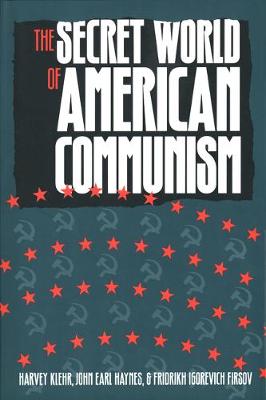Annals of Communism (YUP)
3 total works
Secret Cables of the Comintern, 1933-1943
by Fridrikh Igorevich Firsov, Harvey Klehr, and John Earl Haynes
Published 27 May 2014
Drawing on secret and therefore candid coded telegraphs exchanged between Communist Party leaders around the world and their overseers at the Communist International (Comintern) headquarters in Moscow, this book uncovers key aspects of the history of the Comintern and its significant role in the Stalinist ruling system during the years 1933 to 1943. New information on aspects of the People's Front in France, civil wars in Spain and China, World War II, and the extent of the Comintern's cooperation with Soviet intelligence is brought to light through these archival records, never examined before.
The Soviet World of American Communism
by Harvey Klehr, John Earl Haynes, and K M Anderson
Published 17 February 1998
Drawing on documents newly available from Russian archives, this important book conclusively demonstrates the continuous and intimate ties between the Communist Party of the United States of America (CPUSA) and Moscow. Digging even deeper than the authors' earlier volume, The Secret World of American Communism, it conclusively demonstrates that the CPUSA was little more than a pawn of the Soviet regime.
The Secret World of American Communism
by Harvey Klehr, John Earl Haynes, and Fridrikh Igorevich Firsov
Published 20 March 1995
By interweaving narrative and documents, the authors of this book present a picture of the Communist Party of the United States of America (CPUSA), one of the most controversial organizations in American public life. Heated debates about whether the Communist Party harboured spies or engaged in espionage have surrounded the party from its inception. This book provides proof that the CPUSA was involved in various subversive activities. At the same time, it discloses details about the workings of the party and about the ordinary Americans and CPUSA leaders who participated in its clandestine activities. The documents presented range from letters by Americans wishing to do international covert work for the Soviet Union, to top secret memos between the head of Soviet foreign intelligence, the Comintern and the CPUSA.
They confirm that: the Soviet Union heavily subsidised the CPUSA and that some prominent Americans laundered money for the Comintern; the CPUSA maintained a covert espionage apparatus in the United States with direct ties to Soviet intelligence; the testimony of former Communists concerning underground Communist activity in the United States can be substantiated; American Communists working in government agencies stole documents and passed them to the CPUSA, which sent them on to Moscow; and the CPUSA played a role in atomic espionage. A narrative places the documents in their historical context and explains key figures, organizations and events. Together the narrative and documents provide a picture of American communism and convey the contradictory passions that drew so many Americans into the Communist movement and eventually tore that movement apart.
They confirm that: the Soviet Union heavily subsidised the CPUSA and that some prominent Americans laundered money for the Comintern; the CPUSA maintained a covert espionage apparatus in the United States with direct ties to Soviet intelligence; the testimony of former Communists concerning underground Communist activity in the United States can be substantiated; American Communists working in government agencies stole documents and passed them to the CPUSA, which sent them on to Moscow; and the CPUSA played a role in atomic espionage. A narrative places the documents in their historical context and explains key figures, organizations and events. Together the narrative and documents provide a picture of American communism and convey the contradictory passions that drew so many Americans into the Communist movement and eventually tore that movement apart.


